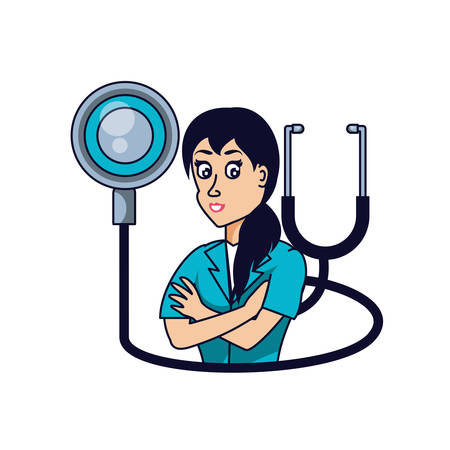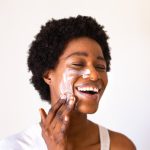1. Introduction to Skin Tightening Treatments
If you’ve ever looked in the mirror and wished your skin felt firmer or smoother, you’re definitely not alone. As we age, our skin naturally loses some of its bounce and elasticity, leading to sagging and fine lines. In the past, surgery was pretty much the only real option for tightening up loose skin. But let’s be honest—going under the knife isn’t for everyone.
That’s where non-surgical skin tightening treatments come in. These procedures are all about giving your skin a lift without any incisions, stitches, or major downtime. Over the last few years, they’ve exploded in popularity across the US. Why? Most people want results that look natural but don’t require weeks of recovery—or breaking the bank.
The two standout options on the market right now are radiofrequency (RF) and ultrasound skin tightening. Both treatments use energy to heat up deeper layers of your skin, which encourages collagen production (collagen is what keeps your skin looking firm and youthful). But how do they actually work, and which one is better for you?
Why Non-Surgical Skin Tightening is Trending in the US
Americans are busier than ever, so convenience matters. Non-surgical options like RF and ultrasound can usually be done in under an hour, with little to no downtime. Plus, there’s a growing trend toward “tweakments”—subtle enhancements that help you look refreshed without obvious signs of work being done.
Main Reasons People Choose Non-Surgical Skin Tightening:
| Reason | Description |
|---|---|
| No Surgery Required | No knives, no scars, just targeted energy delivered through the skin. |
| Minimal Downtime | Most people go back to their normal routine right after treatment. |
| Natural-Looking Results | Gradual improvements that don’t scream “I had something done!” |
| Lower Cost | Typically much less expensive than surgical facelifts. |
| Quick Appointments | Treatments often take less than an hour. |
With these benefits in mind, it’s no wonder more Americans are turning to non-surgical solutions to tackle sagging skin. In this article series, we’ll break down the differences between radiofrequency and ultrasound skin tightening—so you can make the best choice for your skin goals.
2. How Radiofrequency Skin Tightening Works
What Is Radiofrequency Skin Tightening?
Radiofrequency (RF) skin tightening is a popular non-invasive treatment that uses energy waves to heat the deep layers of your skin. The goal is to stimulate your body’s natural collagen production, which can help your skin look firmer, smoother, and younger. In the U.S., you’ll often hear about this treatment at med spas and dermatology clinics—think of it as a high-tech way to fight saggy skin without surgery or downtime.
The Science Behind RF Treatments
Here’s how it works: RF devices send controlled radiofrequency energy into the dermis (the middle layer of your skin). This heats up the tissue just enough to trigger a healing response. Your body responds by making more collagen and elastin, which are like scaffolding for your skin. Over time, this new support system helps tighten loose or crepey areas on your face, neck, and even body parts like arms or stomach.
How Does It Feel?
Most people say RF treatments feel like a warm massage on their skin. There’s usually no pain or needles involved, and you can go back to work right after. You might see some redness for an hour or two, but that’s about it.
Benefits of Radiofrequency Skin Tightening
| Benefit | What It Means for You |
|---|---|
| No Surgery Needed | No cutting, no scars—just walk in and out of the clinic |
| Minimal Downtime | You can get treated during lunch and head back to work |
| Naturally Boosts Collagen | Your body does the work over time for gradual improvement |
| Works on Multiple Areas | Face, neck, jawline, tummy, thighs—you name it |
| Safe for All Skin Types | Darker and lighter skin tones can both benefit safely from RF treatments |
What Results Can You Expect?
Don’t expect instant magic; it usually takes a few sessions to see visible results because collagen builds gradually. Most people notice tighter skin and improved texture after 2-6 treatments spaced a few weeks apart. Some even combine RF with other treatments for extra oomph.

3. How Ultrasound Skin Tightening Works
If youre curious about non-surgical ways to get firmer, younger-looking skin, you’ve probably come across ultrasound skin tightening as an option. Let’s break down how these treatments work and why so many people in the U.S. are considering them for their beauty routines.
What Is Ultrasound Skin Tightening?
Ultrasound skin tightening uses focused ultrasound energy to heat up the deeper layers of your skin. This controlled heating jump-starts your body’s natural collagen production—collagen being the key protein that keeps your skin plump, tight, and smooth. The most well-known brand for this treatment is Ultherapy, but there are other similar devices out there too.
How Does It Compare to Radiofrequency?
While both radiofrequency (RF) and ultrasound aim to firm up your skin by stimulating collagen, they use different types of energy and target different depths:
| Treatment Type | How Deep Does It Go? | Main Energy Used | Best For |
|---|---|---|---|
| Radiofrequency | Superficial to mid-layers of skin | Electrical currents (RF waves) | Mild to moderate laxity, surface smoothing |
| Ultrasound | Deeper skin layers (SMAS layer) | Focused ultrasound waves | Lifting & firming saggy areas (jawline, brows) |
The Process: What to Expect During Treatment
A typical ultrasound skin tightening session lasts about 30-90 minutes, depending on the treated area. There’s usually no need for anesthesia. Your provider will apply a gel, place a handpiece against your skin, and deliver precise pulses of ultrasound energy. Most people feel some heat or tingling but nothing too uncomfortable.
Main Benefits of Ultrasound-Based Procedures
- No downtime: You can go right back to work or daily life after treatment.
- Natural-looking results: Collagen builds gradually over weeks to months, so improvements look subtle and genuine—not “overdone.”
- Long-lasting effects: Many people see benefits that last up to a year or more with just one session.
- Treats tough areas: Especially good for lifting the brow, tightening under the chin, and improving neck firmness.
- Safe for all skin tones: Because it targets deep tissue, there’s little risk of discoloration or burns on darker complexions.
Is Ultrasound Skin Tightening Right for You?
If you want noticeable lifting without surgery or extensive recovery time—and if you’re realistic about seeing gradual rather than dramatic changes—ultrasound could be a great fit. Results do depend on your age, skin quality, and how much laxity you have going in. If you’re weighing it against RF treatments, consider whether you want deeper lifting (ultrasound) or more surface-level smoothing (RF).
4. Comparing Results: RF vs. Ultrasound
If you’re looking to tighten your skin without surgery, both radiofrequency (RF) and ultrasound treatments promise smoother, firmer skin. But how do they really compare when it comes to results? Let’s break down what you can honestly expect as a consumer, based on real-life experiences and clinical evidence.
Effectiveness: What Kind of Results Can You Expect?
Radiofrequency (RF): Most people notice subtle improvements after just one session, especially with sagging skin around the jawline or cheeks. The effects build gradually over weeks as your body produces more collagen. People who want mild-to-moderate tightening usually see the best results.
Ultrasound: Treatments like Ultherapy go deeper under the skin compared to RF. This means you might not see immediate changes, but significant lifting and tightening can show up after 2-3 months. It’s often preferred for heavier lifting, especially around the neck and brow areas.
How Long Do Results Last?
| Treatment | How Soon You See Results | How Long Results Last |
|---|---|---|
| Radiofrequency (RF) | A few weeks | 6 months – 1 year (maintenance needed) |
| Ultrasound | 2-3 months | 1 year or more (sometimes up to 18 months) |
What Does “Real Life” Look Like?
RF: It’s great if you want a gradual refresh without downtime—you can go right back to work or errands. Some people need several sessions for the best effect, so it’s not always a one-and-done deal.
Ultrasound: Expect a little swelling or tenderness for a few days, but nothing that’ll keep you from daily life. Most folks only need one treatment per year, though touch-ups are common for stubborn spots.
The Bottom Line on What to Expect as a Consumer
- If you want fast, subtle results with zero downtime, RF is your friend—just don’t expect miracles overnight.
- If you’re aiming for noticeable lifting and are okay waiting a few months, ultrasound is worth considering—even though it’s pricier per session.
- Your age, skin type, and how much sagging you have all play a role in how well either method works for you.
5. Safety, Side Effects, and Downtime
If you’re considering radiofrequency (RF) or ultrasound skin tightening, it’s totally normal to wonder how safe these treatments are, what side effects you might experience, and if you’ll need to take time off from your regular life. Here’s a straightforward breakdown of what real people can expect when getting these procedures done in the U.S.
What Does Each Treatment Feel Like?
| Treatment | During the Procedure | Pain Level (1-10) |
|---|---|---|
| Radiofrequency (RF) | Most people say RF feels like a warm massage on the skin. Some spots may feel hotter, but it’s usually manageable. | 2-4 (mild discomfort for most) |
| Ultrasound | Ultrasound tightening can feel like little zaps or tingling under the skin. Some areas (like the jawline) can be more sensitive. | 3-6 (brief stings possible) |
Possible Side Effects: What’s Normal?
| Treatment | Common Side Effects | How Long Do They Last? |
|---|---|---|
| Radiofrequency (RF) | Redness, mild swelling, slight tenderness | A few hours to 1 day |
| Ultrasound | Redness, swelling, tingling, rare bruising | A few hours to 2 days (rarely longer with bruising) |
The good news? Both RF and ultrasound skin tightening are non-invasive, meaning there are no needles or cuts involved. The risk of serious side effects is very low when performed by a trained provider. Most people find side effects pretty mild—think of it like a sunburned feeling that fades quickly.
Downtime: Will I Need to Skip Work or Social Events?
This is where both treatments score points with busy Americans:
- No downtime required for either option.
- You can go back to work, hit the gym, or grab coffee right after your appointment.
- If you wear makeup, you can usually reapply it the same day.
- If you have sensitive skin or get some swelling, you might want to skip big social plans for a day—but that’s about it.
Safety Tips from Real Consumers:
- Always choose a licensed dermatologist or medical spa with strong reviews—don’t bargain-hunt for your face!
- Mention all medications and skin issues during your consult; some conditions may increase risks.
- If you tend to bruise easily or have super-sensitive skin, ask your provider which method is gentler for you.
- If anything feels wrong during treatment, speak up—providers can adjust settings right away.
Bottom Line on Comfort and Recovery:
If you’re worried about pain or needing days off to recover, both RF and ultrasound are consumer-friendly choices. Most people describe them as “weird but tolerable” rather than truly painful—and there’s almost no disruption to your daily routine. Just be prepared for mild redness and maybe some tingling after your session—and don’t forget sunscreen afterward!
6. Cost Considerations in the US
When it comes to choosing between radiofrequency (RF) and ultrasound skin tightening, cost is a major factor for many people in the US. Lets break down what you can expect to pay, what youre getting for your money, and how insurance fits into the picture.
Average Pricing: RF vs. Ultrasound
| Treatment Type | Average Cost per Session | Sessions Needed | Total Estimated Cost |
|---|---|---|---|
| Radiofrequency (RF) | $300 – $700 | 4 – 6 | $1,200 – $4,200 |
| Ultrasound (e.g., Ultherapy) | $1,000 – $4,500 | 1 – 2 | $1,000 – $9,000 |
What’s Included in the Price?
- RF Skin Tightening: The price usually covers the procedure itself and a quick consultation. Post-treatment care products or follow-up visits might cost extra.
- Ultrasound Skin Tightening: This higher upfront cost often includes a more detailed consultation, but follow-up treatments (if needed) will add to your total bill.
Value for Your Money
If you’re looking for gradual results over several sessions and don’t want to spend a huge amount at once, RF can be easier on your wallet. But if you want faster results with fewer visits—even though it’s more expensive—ultrasound treatments might be worth it.
Insurance Factors: Don’t Get Your Hopes Up
Unfortunately, both RF and ultrasound skin tightening are considered cosmetic procedures in the US. That means they’re almost never covered by health insurance or FSA/HSA accounts. Be prepared to pay out-of-pocket for both options.
Extra Costs to Watch For
- Consultation fees (sometimes applied to the treatment if you book)
- Anesthesia or numbing creams (for some ultrasound devices)
- Aftercare products like soothing gels or SPF creams
- Add-on areas or combination treatments (neck, chest, hands, etc.)
The bottom line: Prices can vary a lot depending on where you live and who does your treatment. Always ask for a detailed quote before you commit so there aren’t any surprises when the bill comes.
7. Which Is Right for You?
When deciding between radiofrequency (RF) and ultrasound skin tightening, it’s not a one-size-fits-all answer. Your best choice depends on several personal factors. Here’s what you should think about before booking a treatment:
Factors to Consider
Skin Type
If your skin is sensitive or you have certain conditions like rosacea, you might react differently to these treatments. RF is generally considered safe for most skin types, while some people with darker skin tones may prefer ultrasound, which tends to have a lower risk of pigmentation changes.
Age
Your age can play a role in how effective each treatment is. Younger folks with mild sagging may see great results from either option. If you’re older and have more pronounced laxity, you might notice more improvement with ultrasound, as it penetrates deeper layers of the skin.
Lifestyle
If you have a busy lifestyle and want minimal downtime, both treatments are non-invasive and let you get back to your routine quickly. However, ultrasound sometimes leads to a little more swelling or tenderness for a few days, so plan accordingly if you’ve got big events coming up.
Personal Goals
What are you hoping to achieve? If you want subtle tightening and collagen boost with gradual improvement, RF could be your pick. If you’re looking for more dramatic lifting effects—especially on the neck or jawline—ultrasound might deliver better results for you.
Quick Comparison Table
| Factor | Radiofrequency (RF) | Ultrasound |
|---|---|---|
| Best For Skin Type | Most skin types, especially lighter skin | All skin types, including darker tones |
| Ideal Age Range | 30s–50s with mild to moderate laxity | 40+ with moderate to severe laxity |
| Downtime | Minimal to none | Mild swelling/tenderness possible |
| Main Benefit | Collagen boost, gradual tightening | Lifting and deeper tissue tightening |
No matter which route you go, always consult a licensed provider who can assess your unique needs and help guide your decision. It’s all about finding what fits best with your lifestyle and goals!


